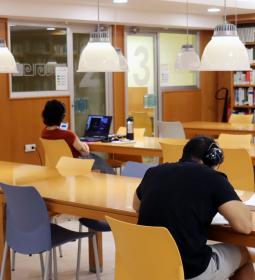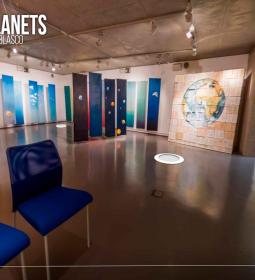Archaeologists of the UA recreate the 'castellum' of El Tossal, which will become into a museum this year

The mayor says that 2017 will be decisive for the archeological site because "it will move from the excavation to the exhibition"
The data collected in four archaeological campaigns, the photographs and journals of excavations of decades ago and the images taken by the dron of the Local Police have allowed a first recreation of the Roman pillbox in the Tossal of La Cala more than 2,000 years ago. Archaeologists from the University of Alicante (UA) led by Feliciana Sala and Jesús Moratalla have used the new technologies to show what was the 'castellum' of the first century BC from which the troops of General Sertorio saw the senatorial ships of their enemies which then they plundered.
This virtual 3D recreation was seen last night in the Hall of Acts of the City Council in the course of the conference 'Last results in The Tossal of La Cala: the Roman' castellum 'Republican re-discovered. A conference in which Sala and Moratalla participated, as well as archaeologists Sonia Bayo and Ana Charquero, and attended by the mayor, Toni Pérez; The councilor of Historical Heritage, Ana Pellicer; Members of the corporation; The Swedish archaeologist Solveig Nordström - who saved the Tossal of Manises in Alicante; and neighbors.
Charquero explained that El Tossal has been "a special reconstruction for the presence of buildings." The first step was to "recover the mountain" to know its original morphology, then locate where the fort was and how it was distributed. The virtualization specialist said that this work of reproduction is "in process" and subject to the changes derived from new data or information that are on the ground in subsequent campaigns.
The next campaign is scheduled for July and will be the fifth promoted by the Department of Historic Heritage and led by the UA. Sala and Moratalla advanced that the objective of this new excavation is to complete the exhumation of wall, of which a section of about 6 meters remains hidden. And from there, the process of musealization of this castellum will begin, the one that has provided the most information to researchers to date and which will become an inescapable reference of Roman military architecture for all archaeologists, according to Said Sala.
The mayor said that "there is now capacity to musealize" these remains, which constitute "the best" of the local historical heritage. Perez remarked that 2017 will be decisive for the deposit because "it is going to move from the excavation to the exhibition", adding that "resources must be available to put value" El Tossal and that this is "an example of musealization" and Also "of what man and woman can do good in the face of what they once did as evil."
A 'castellum' with two constructive models and occupied by 'contubernia'
The conference of UA archaeologists served to disclose all the information that has been collected in recent years and which has confirmed that El Tossal was a Roman fort and not an Iberian settlement as it was believed for decades. The excavated remains of residences, the discovery of the wall, the analysis of the pieces found or recovered from the campaigns by Father Belda -1943- or Ramos y Tarradell -1956-, and the study of diverse documentation have allowed to determine that in the 'Castellum' there are two models of building: the dependencies for soldiers, and those for the officers and the administration of the fort.
It is also known that the troops of the 'castellum' were organized in 'contubernia', groups of eight soldiers; and that they consumed wine, oil and salted fish from the Italian peninsula combined with local products and what they fished or hunted in the area.






